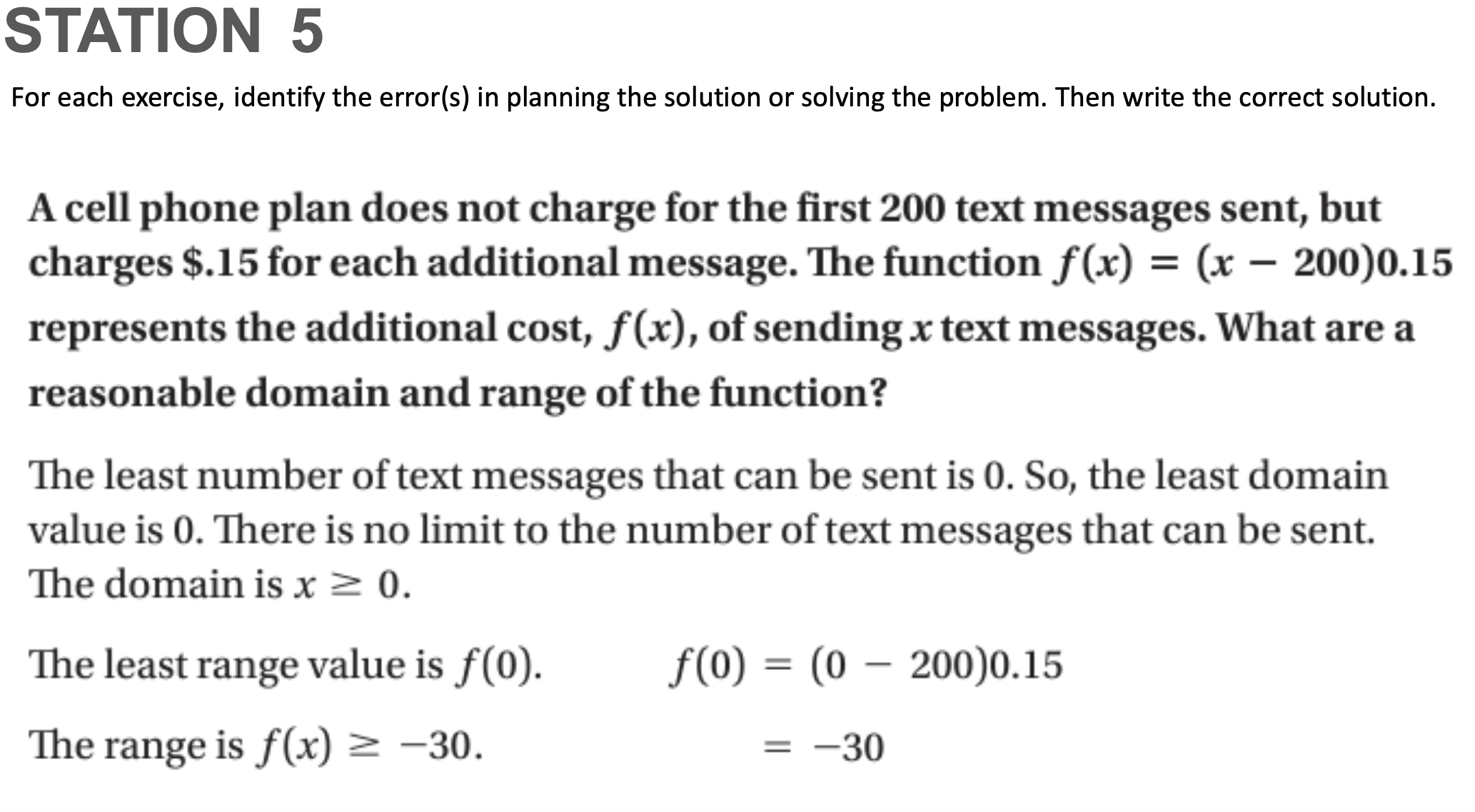For each exercise, identify the error(s) in planning the solution or solving the problem. Then write the correct solution. A cell phone plan does not charge for the first 200 text... For each exercise, identify the error(s) in planning the solution or solving the problem. Then write the correct solution. A cell phone plan does not charge for the first 200 text messages sent, but charges $.15 for each additional message. The function f(x) = (x - 200)0.15 represents the additional cost, f(x), of sending x text messages. What are a reasonable domain and range of the function?

Understand the Problem
The question is asking to identify any errors in the solution provided for a cell phone plan cost problem and to write the correct solution, including determining the domain and range of the function.
Answer
The domain is \( x \geq 200 \) and the range is \( f(x) \geq 0 \).
Answer for screen readers
The domain is ( x \geq 200 ) and the range is ( f(x) \geq 0 ).
Steps to Solve
-
Identify the function's definition The function provided is ( f(x) = (x - 200) \times 0.15 ). This represents the additional cost of sending ( x ) text messages after the first 200 messages.
-
Determine the effective domain Since the plan charges for messages beyond 200, the minimum number of messages, ( x ), must be 200 for the function to yield valid costs. Thus, the domain is defined as ( x \geq 200 ).
-
Calculate the range To determine the range, we evaluate ( f(x) ) starting from the minimum domain value:
- For ( x = 200 ): $$ f(200) = (200 - 200) \times 0.15 = 0 $$
As ( x ) increases, the function output will also increase. There’s no upper limit to ( x ), meaning the range is ( f(x) \geq 0 ).
-
Summarize findings The domain is ( x \geq 200 ), and the range is ( f(x) \geq 0 ).
The domain is ( x \geq 200 ) and the range is ( f(x) \geq 0 ).
More Information
This problem highlights how the first 200 text messages incur no cost, making it crucial to correctly define both the domain and range based on the function's behavior beyond this threshold.
Tips
The common mistake is assuming that the domain starts from ( x = 0 ). In this case, it must start from ( x = 200 ) because costs are only incurred after that point. This distinction is key in understanding how the function operates.
AI-generated content may contain errors. Please verify critical information